After March’s surge to the upside, the median price per square foot
pulled back in April:
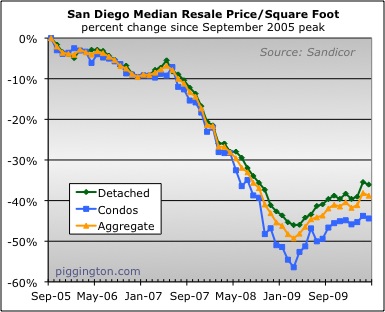
Single family homes, condos, and the aggregate were all down around
1%. But this is after a rise of about 5% in March, so prices by
this measure are still the highest they’ve been since September 2008
(exclusive of the prior month, of course).
The Case-Shiller proxy, which uses a 3-month average, was up robustly
once again:
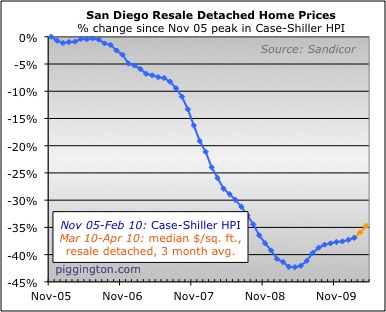
As I said last month, I suspect that some of the recent price rise is
due to compositional shift and thus not “real.” So while I do
believe
that prices are rising, I suspect that the real Case-Shiller index will
show an increase that is more muted.
The vanilla median was more mixed than the median price per square
foot, with condos pulling off an increase:
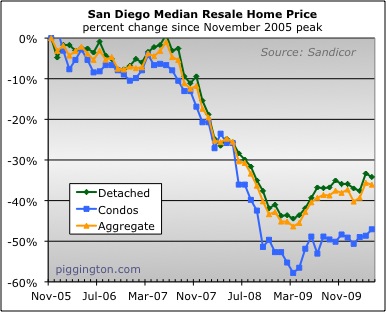
Sales were actually weak, falling over 7% in a month when they rose
last year:
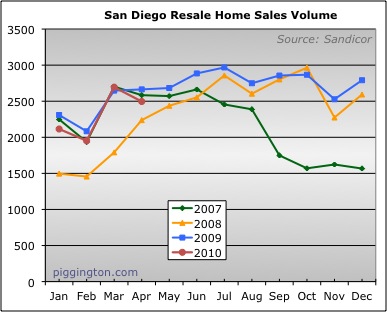
And inventory finally appears to be on the upswing:
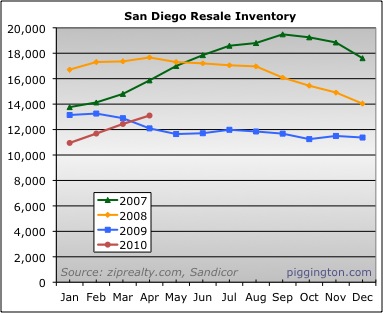
Lower sales and higher inventory made for a jump in the
months-of-inventory figure to over 5:
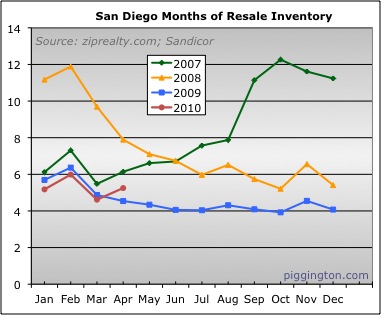
The increase has incidentally taken place in the active inventory
category, so these are more actual homes for sale, as opposed to homes
caught up in contingent status:
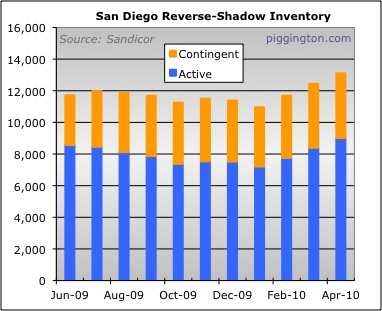
Here’s what I wrote at voiceofsandiego.org about the decline in sales
and (assuming the median price per square foot is providing a good
read) pricing:
Why the dip? It could be noise, but there’s another
potential
explanation as well. As many readers have doubtless read
elsewhere, we are in a brief period in which Californians can get two
home buyer tax credits: the Federal credit, and the new California
credit. (Why a state with serial budget crises is spending $100
million to render its housing supply less affordable is a topic for
another time). The Federal credit is good through June, but the
California credit didn’t start up until May. So in order to
double-dip, buyers need to close in May or June.The idea I’m working toward is that some buyers might have wished to
wait until May to close their sales, rendering April a weak month for
closings… This lack of demand to
buy in the month of April might have exerted some downward pressure on
prices.
As I also wrote, if this is what’s going on, we can expect this process
to go into reverse next month. So demand and potentially pricing
could pick up further in the months ahead, at very least until the
California tax credit runs out.
Meanwhile, we are finally seeing inventory start to grow in a sustained
manner. If that keeps up it could lead to increased activity as
more frustrated buyers’ demands are able to be met. At the same time,
it could take some wind out of the market’s sales price-wise.
